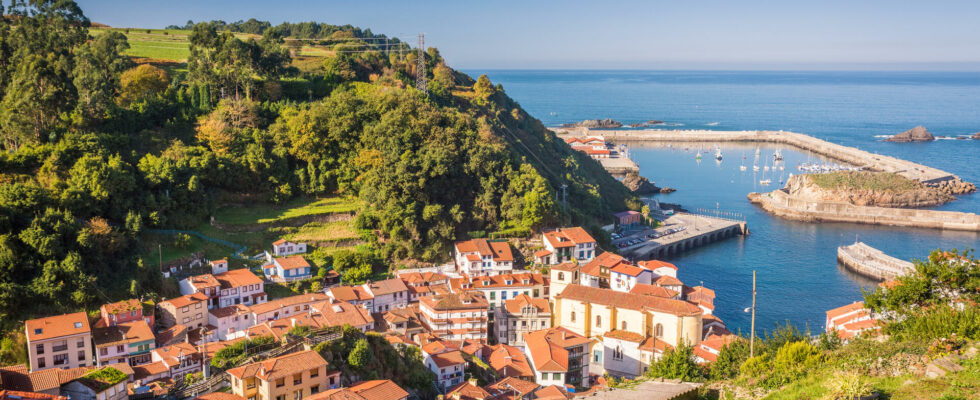In the only car of the train that travels across northern Spain, from Gijon, in Asturias, to Ferrol, in Galicia, there are ten of us traveling. Most of the passengers boarded Cudillero, one of those charming villages, nestled on the side of a cliff on the edge of the Cantabrian Sea. Nilo Prieto Alvarez is one of these travelers. He will go down to Viveiro, in Galicia, to eat octopus.
The seven-hour round trip is of little importance to this retiree, compared to the pleasure of taking this line once a week. “My feet become rounder with white wine, I sway a little, but I never fall”jokes the man who has worked all his life in metallurgy and whose blue eyes scan the familiar landscape. “He knows every corner and every station”says controller Eva Granda, while the car has just stopped to let a dog cross the lane.
The stop and the honking of the horn surprise no one here. Neither the old lady with the big suitcases who has just told us that she lost her accommodation, nor the party animal who returns from a sleepless night in Oviedo, nor the young Polish woman who is taking a break on the way to Compostela. The train follows its own pace, 60 kilometers per hour on average, and around a hundred stops in total before arriving at Ferrol, the terminus. It’s also slow on the other side, to the east, between Oviedo and Llanes, it takes three and a half hours to cover the 90 kilometers. “In Asturias there is often only one lane, which means stopping to let the other car pass”specifies Eva Granda.
So much for the atmosphere in the Cercanias (“suburbs”), the RER of Asturias. The FEVE narrow gauge railway has been managed since 2012 by Renfe, the Spanish railway company. This network, mainly located in the north of the country, follows the route of the old lines used to transport iron between the mines and the main ports, Gijon and Aviles, at the very beginning of the 20th century.e century.
Today, it avoids the isolation of the countryside and allows the local population to travel at preferential rates. And to all those who wander to discover Asturias differently. At the wrong time. Letting the hours pass and looking into the distance. By borrowing “the train that stops all the time”. That of viaducts overlooking the sea, tunnels opening onto the green mountains of the Sierra de Cuera, coastal villages, inaccessible coves and ghost stations. Like the one in Castropol, an abandoned hut in the middle of a field where two sheep observe you, astonished.
You have 65.73% of this article left to read. The rest is reserved for subscribers.
